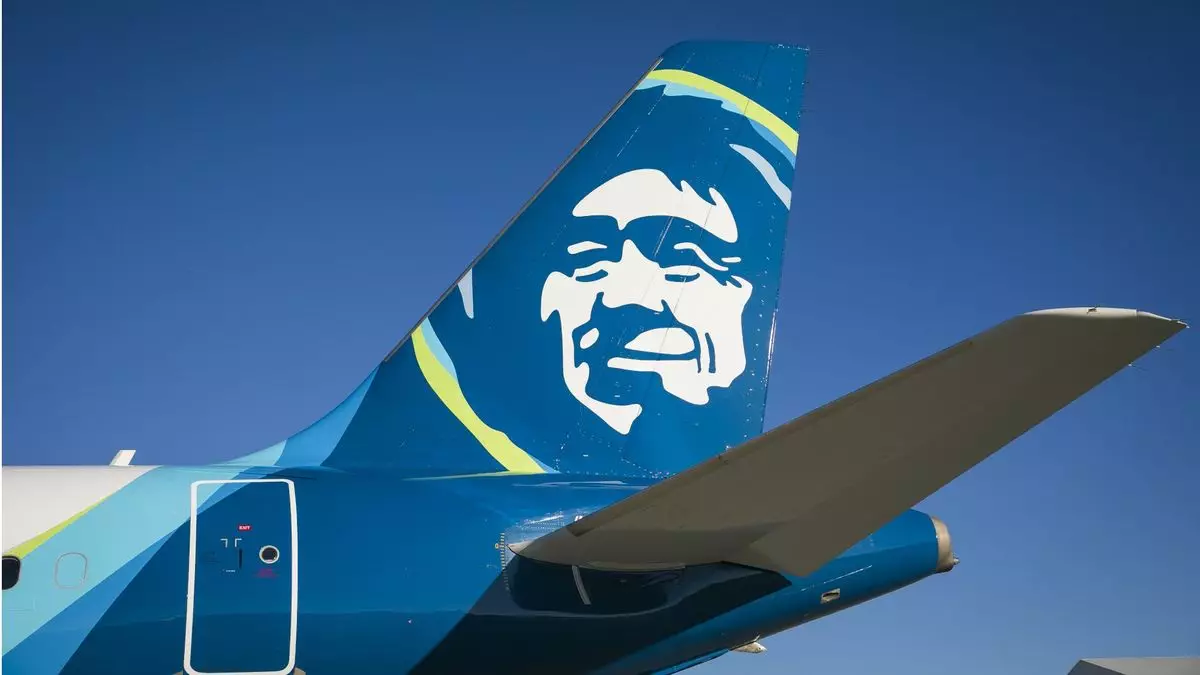Imagine being on a flight, excited for your journey, when suddenly chaos erupts. This was the reality for the passengers of an Alaska Airlines jetliner that experienced a horrifying incident shortly after takeoff. Just three miles above Oregon, a window blew out, creating a gaping hole in the fuselage. As a result, clothing was forcefully sucked off a child, and the pilots were forced to make an emergency landing. While no one was seriously injured, the incident has raised concerns and prompted an investigation by the National Transportation Safety Board.
The aftermath of the incident has been significant for both Alaska Airlines and its passengers. The airline chose to ground its 65 Boeing 737-9 aircraft until inspections could be carried out. This decision demonstrates a responsible approach to ensuring the safety of future flights. However, the impact on the company’s flight schedule remains uncertain, making it difficult for passengers to plan their travel with confidence.
One of the most harrowing aspects of the incident was the experience of a child and his mother who were seated near the window that blew out. The force of the depressurization caused the child’s shirt to be sucked off him and out of the plane. This traumatizing event highlights the potential dangers of such incidents and emphasizes the need for stringent safety measures to protect passengers, especially vulnerable children.
The National Transportation Safety Board has taken up the task of investigating the Alaska Airlines incident. This investigation is crucial to understanding the causes of the window blow out and to prevent similar incidents from occurring in the future. The cooperation between Alaska Airlines, Boeing, and regulatory bodies is essential to ensure a thorough and effective investigation.
Alaska Airlines CEO, Ben Minicucci, has acknowledged that the inspection process for the entire 737-9 fleet could take days to complete. This delay in recovery further adds to the inconvenience faced by the airline and its passengers. It is a challenging task to inspect and address any potential issues across such a significant number of aircraft, but it is necessary to ensure the safety of future flights.
The incident raises questions about the overall safety measures in place for aircraft. The fact that a relatively new aircraft, with only 145 flights since entering commercial service, experienced such a catastrophic failure is concerning. It highlights the importance of comprehensive safety protocols, rigorous testing, and continuous monitoring of aircraft to prevent similar incidents in the future.
The Boeing 737 Max, the newest version of the 737 series, has had a tumultuous history. Previous crashes involving the Max 8 model resulted in the grounding of all Max 8 and Max 9 planes worldwide for nearly two years. Boeing had to make significant changes to the automated flight control system implicated in those crashes. The incident involving Alaska Airlines brings back the specter of those previous tragedies and raises questions about the reliability and safety of the Max series.
In response to previous issues, the FAA had issued guidelines for pilots, limiting the use of certain systems in specific conditions. This demonstrates the proactive approach taken by aviation authorities to address potential safety concerns. It is paramount that such guidelines continually adapt to new information and emerging risks to ensure the highest level of safety for passengers.
The Alaska Airlines incident serves as a stark reminder that safety must always be the top priority in the aviation industry. All stakeholders, including airlines, aircraft manufacturers, regulatory bodies, and passengers, must remain vigilant and actively contribute to the continuous improvement of safety standards. By learning from incidents like this, the industry can strive to prevent future accidents and ensure a safer travel experience for all.


Leave a Reply